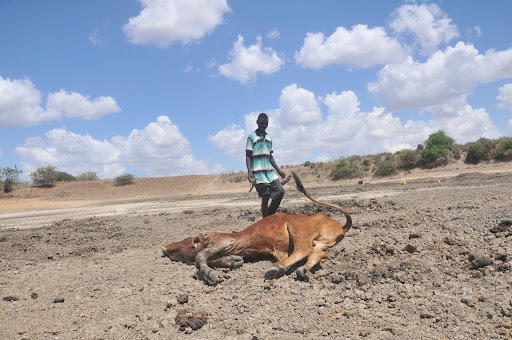Nyanza and Busia farmers eye good returns from sorghum at the end of this month.
The majority ditched maize and sugarcane farming for contract sorghum farming. They expect to deliver 8,000 tonnes of harvests to the newly refurbished Kenya Breweries Limited plant in Kisumu — a subsidiary of the East African Breweries Limited.
At least 15,000 farmers in Kisumu, Siaya, Homa Bay, Migori and Busia defied harsh weather to plant specific varieties of white sorghum used in the production of EABL’s Senator Keg beer. The firm contracted women's groups.
EABL Western Kenya regional agribusiness manager Eliud Kiptoo said farmers' resilience will pay off by the end of this month. He said the farmers could harvest 8,000 tonnes.
“This is very promising given the challenges the farmers faced, especially the delays of the long rains. We're happy that many of the farmers took our advice to extend planting periods into mid last month,” he said.
Mlolongo Women's Group, which had just nine members last year, now has 500 farmers. Its leader Rose Matano said many of them attended sensitisation seminars but only nine took up the opportunity last year.
“The returns were impressive. I personally earned 65,000 after cultivating three and a half acres of sorghum and the same amount from soya beans,” she said.
Due to high returns, the group recruited and trained others on how to plant the crop.
George Okinda is one of those who have gone large-scale, using his 16 acres for sorghum farming.
He quit sugarcane farming. The sugar sector crisis had left them staring at losses arising from delayed harvests and late payments.
According to grain aggregating agency Western Dry Foods Limited, Siaya and Busia counties registered 2,867 new sorghum farmers. The farmers are putting between two and 15 acres under sorghum. Many of them were persuaded by the success posted by the first people to be recruited into the project.
The company projects that the farmers will supply between 6,500 and 8,000 tonnes of threshed grain, just about 2,000 tonnes below last year's target.
Farmers were advised to use higher-yielding, faster-maturing Sila varieties, which take just 75 days to mature.
Delayed rains had sent fears of possible crop failure and many of the farmers put off planting to wait for the rains.
In case of a shortfall, more farmers will be contracted to plant during the short-rain season that begins in September.
“We do not expect any effect on brewing because we are cushioned by sufficient stock from last year and we also plan to meet the shortfall in the short rains,” Kiptoo said.
The introduction of the crop as an alternative to poor-performing and low-paying maize has continued to net more farmers in the region.
Those contracted are advised to improve soil fertility with legumes such as soya beans, whose industrial demand offers equally promising returns.
Many of the farmers have, however, yet to realise the potential of 12 to 15 90-kilogramme bags per acre. Experts largely blame this on underdeveloped agribusiness practices such as proper farm preparation and management, use of fertiliser, pests and birds control and postharvest handling.
As part of efforts to fix the problems, the EABL has brought on board different sector players such as Cereal Growers Association to advise farmers on best practice. Some organisations link them to input providers.
Others in the fold include financiers who extend input loans to farmers and insurance covers to cushion them from losses arising from calamities such as drought and floods, or crop failure due to pest infestation. Insurance penetration was however reported to be low, apparently due to poor payouts.
(Edited by F'Orieny)














